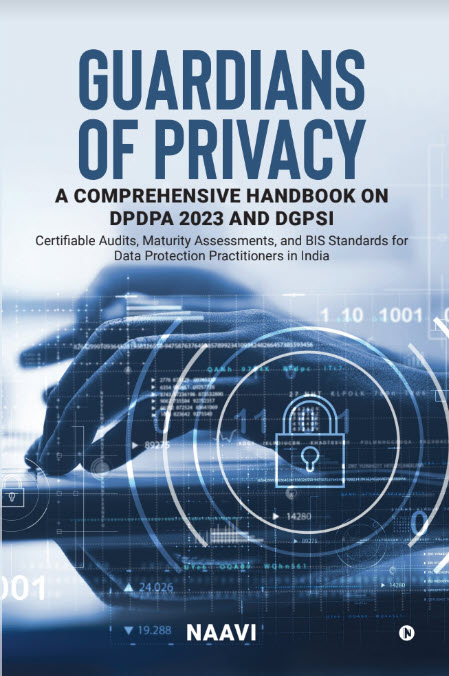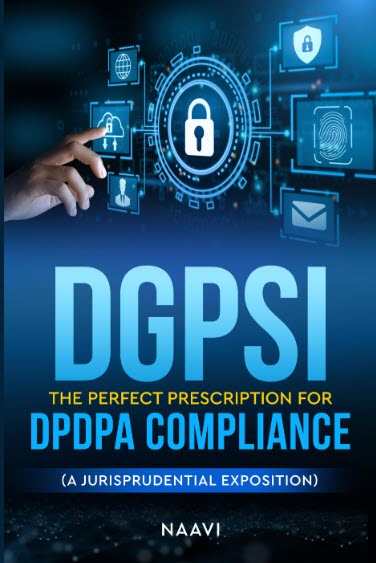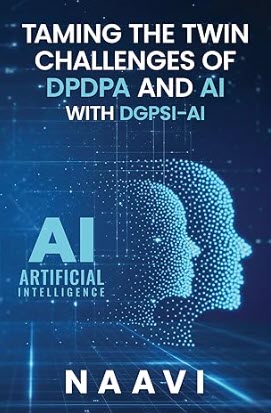The Telecommunications Act 2023 which is basically a regulation for the industry has certain provisions applicable to the use of Telecommunication services which has a bearing on the users as well. Most of the provisions of the Act became effective from 26th June 2024. Accordingly, Sections 1, 2, 10 to 30, 42 to 44, 46, 47, 50 to 58, 61 and 62 of the Act came into effect from June 26, 2024.
For example the Act defines “Message” as any sign, signal, writing, text, image, sound, video, data stream, intelligence or information sent through telecommunication which is also an “Electronic Document” under ITA 2000.
In this Act some of the provisions overlap with the provisions of ITA 2000 which we need to take note of.
Also, the term “telecommunication” means transmission, emission or reception of any messages, by wire, radio, optical or other electro-magnetic systems, whether or not such messages have been subjected to rearrangement, computation or other processes by any means in the course of their transmission, emission or reception;. This may mean that an “E Mail” may come within this definition.
Also, “telecommunication identifier” means a series of digits, characters and symbols, or a combination thereof, used to identify uniquely a user, a telecommunication service, a telecommunication network, elements of a telecommunication network, telecommunication equipment, or an authorised entity. This could mean that “Meta Data” such as the IP address, IMEI number etc may come under this definition.
In the offences sections, Section 42 (2) states
(2) Whoever directly or indirectly or through personation—
(a) gains or attempts to gain unauthorised access to a telecommunication network or to data of an authorised entity or transfers data of an authorised entity; or
(b) intercepts a message unlawfully, shall be punishable with imprisonment for a term which may extend to three years, or with fine which may extend up to two crore rupees, or with both.
Explanation.—For the purposes of this sub-section,—
(i) the expression “personation” shall have the same meaning as assigned to it under section 416 of the Indian Penal Code; (Ed: Sec 319 of BNS 2023)
(ii) data of an authorised entity includes call data records, internet protocol data records, traffic data, subscriber data records and the like.
This is similar to Section 66, 66C of ITA 2000 and also the Section 69 of the ITA 2000..
Similarly, Section 42(3) states:
(3) Whoever,—
(a) possesses or uses without an authorisation, any equipment that blocks telecommunication;
(b) uses telecommunication identifiers not allotted or permitted in accordance with sub-sections (8) and (9) of section 3;
(c) tampers with telecommunication identifiers;
(d) possesses radio equipment without an authorisation or an exemption that can accommodate more than specified number of subscriber identity modules;
(e) obtains subscriber identity modules or other telecommunication identifiers through fraud, cheating or personation;
(f) wilfully possesses radio equipment knowing that it uses unauthorised or tampered telecommunication identifiers
This provision means that if any person wants to use the “Micro sonic Electricity Generator” of the Zimbabwean inventor Mr Maxwell Chikumbutso, it requires the license from DOT.
“Tampering with telecommunication identifiers” may include tampering with IP address and all services including Gmail or Proton mail, where Originating IP address of an email is replaced by a proxy IP address assisting in the delivery of spam mails, and fraudulent mails.
Now in a move that further underscores the link of the TCA2023 and ITA 2000, DOT has issued an advisory on removal of content on social media platforms on February 18th.
This has relation to an YouTuber who had posted a message on how to change the Calling Line Identification (CLI) number so that the recipient does not identify the caller.
This provision should the activities of Cyber Criminals and Spammers who assist the commission of a crime through “How to Commit a Crime” knowledge.
While this could have been covered under ITA 2000 itself, now we have an additional legal provision that is applicable to the promoters of such criminal activities including the YouTube or Instagram who are “Intermediaries” and may try to claim Section 79 protection.
The advisory also states that ” Any application that allows to tamper telecom identifier (like CLI, IP address, IMEI etc.) is abetting users in committing an offence by contravening provisions of Telecommunication Act, 2023 and therefore Social media platforms and Application hosting platforms are required to remove such content / applications that allows or promotes tamper of telecom identifier (like CLI, IP address, IMEI etc.) in contravention to the provisions of the Telecommunication Act, 2023. (P.S: This applies to many Security Companies and Security app development companies who may be inadvertently committing a contravention.)
In addition to removing such content / applications action against such entities may also be initiated under Section 42 of the Telecommunications Act who are involved in making/promoting such content / applications that aid commitment of offence under the Telecommunication Act, 2023.”
The advisory requires all Social Media Platforms and hosting platforms to comply with the advisory and also submit compliance to the department before 28th February 2025.
We may recall that when Naavi.org pointed out IRCTC hacking several years back and the Digilocker hack during the Covid time and wanted the Government to put the fear of God on the hacker, there was no response from the Government. Finally the hacker showed his temerity to issue a defamation notice to the undersigned because DigiLocker authorities were not interested in taking action against the hacker and given an impression that the law enforcement in such matters does not exist in India. Though the hacker backed off after a while, the lack of action from the Ministry was disappointing.
This forbearance with the criminals that continues to be shown till date is the bane of our system and emboldens the “Andolan Jeevies” to jump to Supreme Court opposing every good move of the Government.
Some time back TRAI had announced that CLI linked to Aadhaar would be displayed in call messages, it was hailed by us as a good move but TRAI did not go through with the proposal obviously under the pressure of the industry.
The entire delay in the notification of DPDPA 2023 is also a tendency to yield to the industry pressures for not taking rigid action against data breaches.
Government has also not shown the courage to address the Bank Frauds issue by penalizing the Banks. I should recall that due to my efforts over 14 years in the Umashankar case where the Bank was held liable for Phishing after aa long legal battle which could have been reduced to a few months if RBI had responded to my requests” (Refer all judgements related to Umashankar case here).
At that time I had visited RBI in Mumbai and sought action against ICICI Bank and PNB for their negligence that assisted the commission of frauds. RBI was not able to understand their responsibility at that time. Finally TDSAT did rule that “Negligence” on the part of the Bank is a contravention of Section 43(g) of ITA 2000. (Now RBI is continuing its trend of supporting illegal activities by seeking exemption of DPDPA 2023 to the Credit rating agencies).
Ministry of Finance is not far behind in this reluctance to curb crimes and has been supportive of the Crypto Currency regime like Bitcoins despite knowing the adverse effect that can have on the country.
I have also been pressing the MHA to take action to curb the use of Dark Web and Private Crypto currencies as a measure of deactivating the digital eco system that supports the cyber crimes. I am yet to find a proper response in this respect even under the Amit Shah and Narendra Modi regime.
When Mr Ravishankar Prasad was the IT Minister, he initiated the Digital Media intermediary Rules and the Government promptly eased him out of the ministry probably because of the pressure from the BigTech and their agents in India.
In the light of such background , the advisory appears to be a bold step and we hope that the Telecom Industry follows it up with action.
Naavi
Also refer: Technology Intoxication is like Wheeling on the City Roads…






